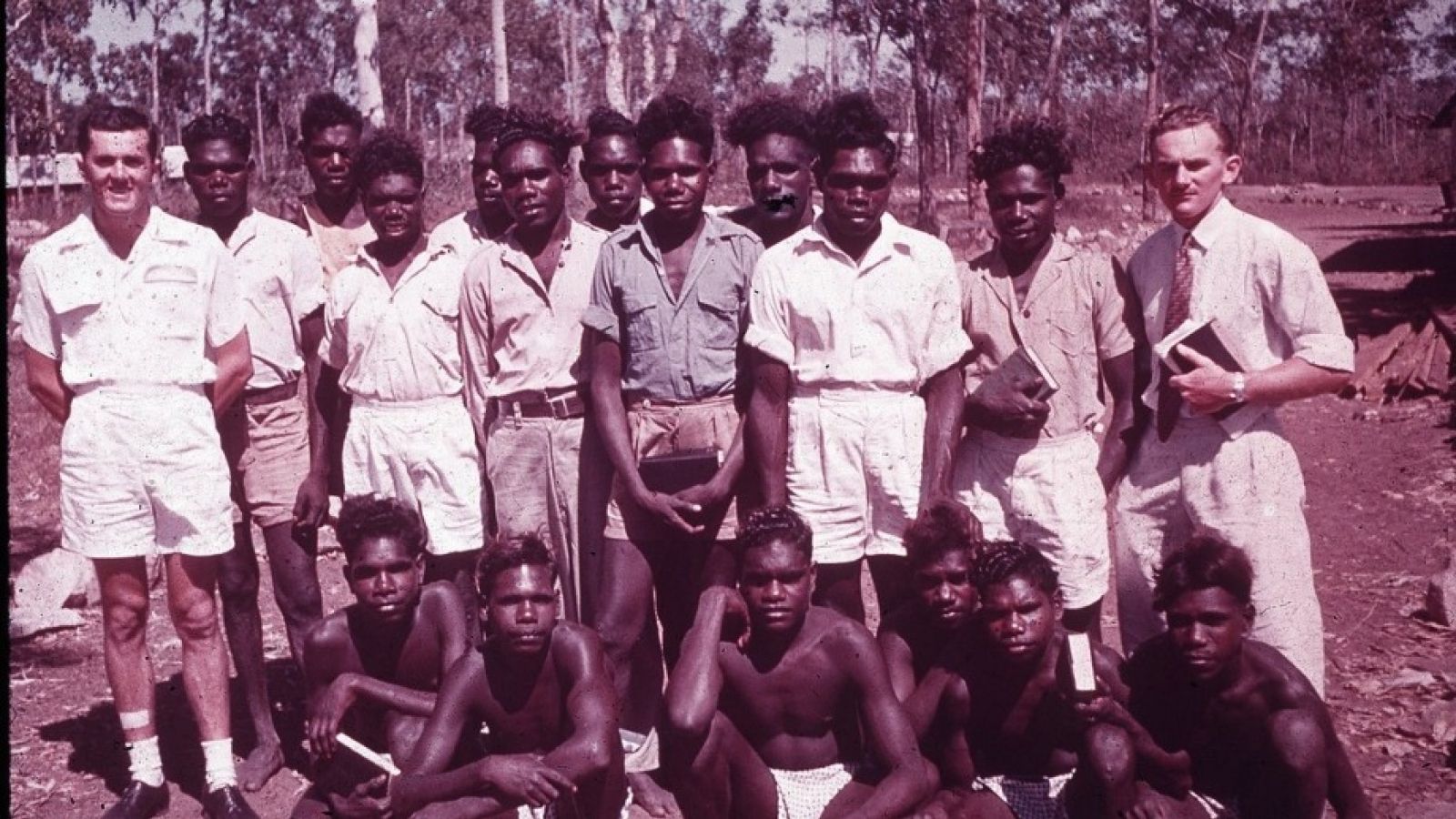Dr Laura Rademaker reveals why Christian missionaries struggled in Australia

Angurugu Bible Class in 1951. Image: Groote Eylandt Linguistics, Keith Hart Collection.
New research from The ANU Centre for Indigenous History's Dr Laura Rademaker, has revealed the strength of Aboriginal cultures, as well as heavy-handed government policies reduced the impact of Christian missions to remote Aboriginal communities during the mid-twentieth century.
The research, published in a new book, reveals that the Church Missionary Society's North Australian Mission experienced significant difficulties due to the Federal Government's desire that Aboriginal people be assimilated into 'white Australian culture'.
The book's author, historian Dr Rademaker, said after decades of trying to convert the people of Groote Eylandt to their Christianity, missionaries were eventually forced to come around to Aboriginal culture.
"They realised there was a richness there that they had to come to terms with," Dr Rademaker said.
"In the later years you actually saw missionaries help transcribe some of the traditional songs and advocate for bi-lingual education."
The research focuses on the mission in the remote community of Groote Eylandt, the largest island in the Northern Territory's Gulf of Carpentaria.
Dr Rademaker said due to government influence missionaries were generally unable to operate as they did in other countries - by learning local languages to translate the bible and its teachings.
"The Australian missions were government funded. Really, they were government agencies trying to assimilate Aboriginal people into white culture," Dr Rademaker said.
"So if they were going to convert to Christianity, they were going to have to convert to a white Christianity.
"Australian missionaries took a really different approach, everywhere else in the world they learned local languages and translated the bible - that's how they converted people.
"But in Australia they weren't able to do that, they had to teach in English which created a lot of communication problems."
Dr Rademaker said due to the missionary's lack of local language skills, the Aboriginal population was able to continue practising their culture while maintaining a façade of Christianity.
"The Aboriginal people were able to carve out spaces for themselves even in the very controlling situation," she said.
"The culture was able to survive very much intact."
Dr Rademaker said this had played a role in the people of Groote Eylandt being able to maintain their culture up to the present day.
"Ceremony is still very strong, and the songs are still sung and passed down. Culture is very much alive on Groote Eylandt," she said.
Dr Laura Rademaker is a researcher at the ANU Centre for Indigenous History within the ANU School of History. Her book Found in Translation: Many Meanings on a North Australian Mission has been published by University of Hawaii Press and is available here: http://www.uhpress.hawaii.edu/p-9911-9780824872656.aspx